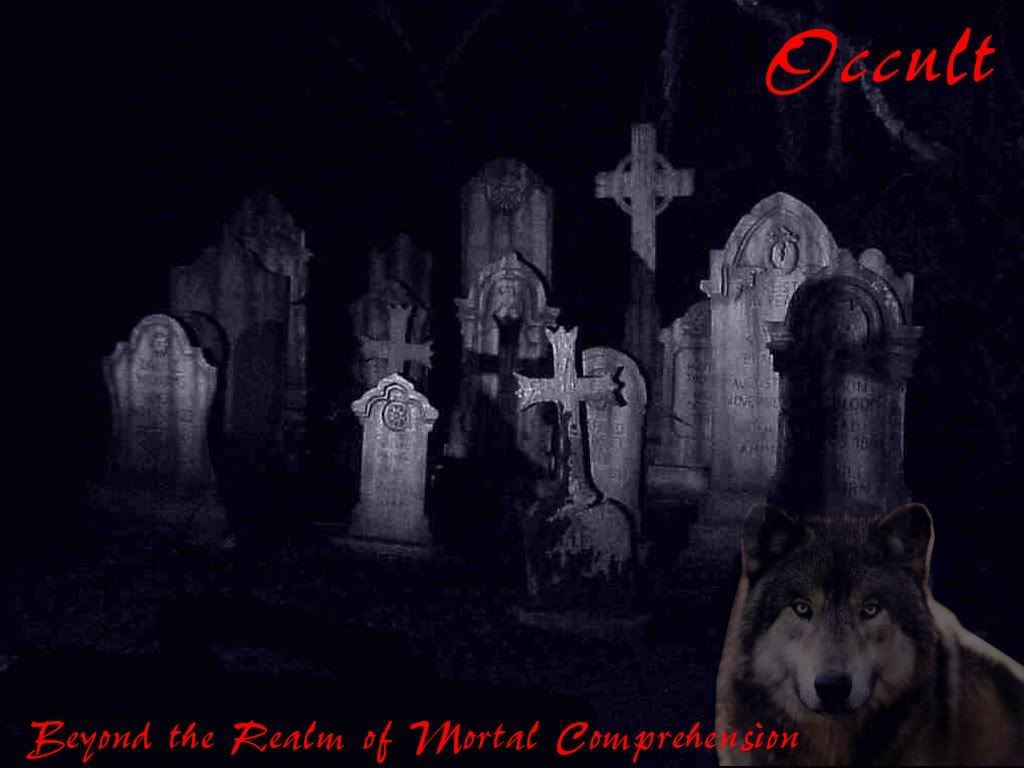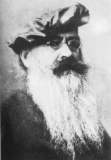
Guido von List [from his Wikipedia page]
Runic revivalism
The row of 18 so-called "Armanen Runes", also known as the "Armanen Futharkh" came to List while in an 11 month state of temporary blindness after a cataract operation on both eyes in 1902. This vision in 1902 allegedly opened what List referred to as his "inner eye", via which he claimed the "Secret of the Runes" was revealed to him. List stated that his Armanen Futharkh were encrypted in the Hávamál (Poetic Edda), specifically in stanzas 138 to 165, with stanzas 146 through 164 reported as being the 'song' of the 18 runes. It has been said this claim has no historical basis.
The Armanen runes are still used today by some Ásatrú adherents who consider the Armanen runes to have some religious and/or divinatory value.
Futharkh spelling
List noted in his book, The Secret of the Runes, that the "runic futharkh (= runic ABC) consisted of sixteen symbols in ancient times.".
As a side note to this, in the English translation of the work, Stephen Flowers notes that "(the designation futharkh is based on the first seven runes it is for this reason that the proper name is not futhark -- as it is generally and incorrectly written -- but futharkh, with the h at the end; for more about the basis of this, see the Guido von List Library number 6, The primal language of the Aryan Germanic people and their mystery language)."
Hexagonal Crystal and the Armanen Runes
List's system was allegedly based on the structure of a Hexagonal Crystal. You can shine light through a crystal at different angles and project all 18 of the Armanen runes.
List's rune row was rather rigid; while the runes of the past had had sharp angles for easy carving, his were to be carefully and perfectly made so that their shape would be a reflection of the 'frozen light', a pattern that he had found in his runes. All of his runes could be projected by shining the light through a hexagonal crystal under certain angles. Rune Hagal is so-called 'mother-rune' because its shape represents that hexagonal crystal.
Karl Hans Welz states that the "crystalline structure of quartz is the "hexagonal system" which is also one of the bases of the Runic symbolism (the hexagon with the three inscribed diameters)." and that "The hexagonal cross section of quartz and the fact that all of the 18 Sacred Futhork Runes are derived from the geometry of the hexagon is the basis of an enormous increase in crystal power when it is associated with Rune images."
Influence
Guido von List Society
A look at the signatories of the first announcement concerning support for a Guido-von-List-Gesellschaft (Guido von List Society), circa 1905, reveals that List had a following of some very prestigious people and shows that List, his ideology and his influence had widespread and significant support, including that amongst public figures in Austria and Germany. Among some 50 signatories which endorsed the foundation of the List Society (which had an official founding ceremony on March 2, 1908) were the industrialist Friedrich Wannieck and his son Friedrich Oskar Wannieck, Jörg Lanz von Liebenfels, and Karl Lueger (the mayor of Vienna). These supporters also included occultists such as Hugo Göring (editor of theosophical literature at Weimar), Harald Arjuna Grävell van Jostenoode (theosophical author at Heidelberg), Max Seiling (an esoteric pamphleteer and popular philosopher in Munich), and Paul Zillmann (editor of the Metaphysische Rundschau and master of an occult lodge in Berlin).
List's influence continued to grow and attract distinctive members after the official founding of the society in 1908. From 1908 through to 1912, new members included the deputy Beranek[disambiguation needed] (co-founder of the "Bund der Germanen" in 1894), Philipp Stauff (a Berlin journalist and later a founding member of the Germanenorden), Franz Hartmann (a leading German theosophist), Karl Heise (a leading figure in the vegetarian and mystical Mazdaznan cult at Zürich), and the collective membership of the Vienna Theosophical Society.
As the list demonstrates, the growth of nationalism within Germany during the late 19th to early 20th century, culminating in the Third Reich of Nazi Germany, provided an ideal audience of people who were already predisposed to accept List's ideas and unidentifiable personal gnosis of the Armanen way. The register shows that List's ideas were acceptable to many intelligent persons drawn from the upper and middle classes of Austria and Germany. So impressed were they that these men were prepared to contribute ten crowns as an annual society subscription. The main part of the Society's assets derived from the Wannieck family, which put up more than three thousand crowns at the Society's inauguration.
The Society's inner circle was called the High Armanen Order or Hoher Armanen Orden.
Quotes by List
"One must flee those places where life throbs and seek out lonely spots untouched by human hand in order to lift the magic veil of nature" (Deutsch-Mythologische Landschaftsbilder, 1st volume, p. 125.)
"Now, because men of our contemporary age are caught up in the ascetic view of a life-denying religious system, but in spite of this cannot deny the primal laws of nature, a distorted morality had to be developed, which spreads hypocritical appearances over hidden actions. This has brought to a head all those outward forms of modern life, whose vacuousness and corruption are now beginning to disgust us." (Das Geheimnis der Runen)
"A star is extinguished, another will begin to shine - thus it is written in the Book of Nature" (Der Unbesiegbare)
Popular culture
List is referred to throughout Katherine Neville's book, The Magic Circle, (NY: Random House; 1998) and is mentioned on page 154 of The Black Order, ([n.pl.]: Orion; 2006) by James Rollins. He also occurs as a character in the novel Vienna Blood (London: Century; 2006), the second in the Max Liebermann series, by British author Frank Tallis.
Influential List Society signatories, circa 1905
Friedrich Wannieck, president of the publishing house Verein "Deutsche Haus" ("German House" Association) in Brünn, and chairman of the Prague Iron Company and the First Brno Engineering Company (major producers of capital goods in the Habsburg empire)
Ludwig von Bernuth, health organisation chairman
Ferdinand Khull, committee member of the German Language Club
Adolf Harpf, editor of Marburger Zeitung
Hermann Pfister-Schwaighusen, lecturer in linguistics at Darmstadt University
Wilhelm von Pickl-Scharfenstein (Baron von Witkenberg)
Amand Freiherr von Schweiger-Lerchenfeld, editor of the popular magazine Stein der Weisen and a distinguished army officer
Aurelius Polzer, newspaper editor at Horn and Graz
Ernst Wachler, author and founder of an open-air Germanic theatre in the Harz Mountains
Wilhelm Rohmeder, educator at Munich
Arthur Schulz, editor of a Berlin periodical for educational reform
Friedrich Wiegerhaus, chairman of the Elberfeld branch of the powerful German Nationalist Commercial Employees' Association (Deutschnationaler Handlungsgehilfen-Verband, or DHV)
Franz Winterstein, committee member of the German Social Party (DSP) at Kassel
Influential List Society members from 1908
Rudolf Berger, a committee member of the German Nationalist Workers' League in Vienna
Hermann Brass, chairman of the defensive League of Germans in North Moravia (est. 1886)
Dankwart Gerlach, an ardent supporter of the romantic Youth Movement
Carl Friedrich Glasenapp, biographer of Richard Wagner
Colonel Karl August Hellwig, an organiser in Kassel
Bernhard Koerner, an heraldic expert and populariser of middle-class genealogy
Josef Ludwig Reimer, Viennese author
Karl Herzog, branch chairman of the DHV in Mannheim
Arthur Weber, a theosophical editor
Karl Hilm, occult novelist
General Blasius von Schemua
Written works
Das Geheimnis der Runen (The Secret of the Runes (book), 1908)
Der Unbesiegbare
Götterdämmerung (1893)
Von der Wuotanspriesterschaft (1893)
Die deutsche Mythologie im Rahmen eines Kalenderjahres (1894)
Der deutsche Zauberglaube im Bauwesen (1895)
Mephistopheles (1895)
Carnuntum
Jung Diethers Heimkehr (1894)
Der Wala Erweckung (1894)
Walkürenweihe (1895)
Pipara: Die Germanin im Cäsarenpurpur (Pipara: the Germanic Woman in the purple of the Caesars, 1895)
König Vannius (1899)
Sommer-Sonnwend-Feuerzauber (1901)
Das Goldstück (1903)
Kunstmärchen anthology: Alraunenmaren: Kultur-historische Novellen und Dichtungen aus germanischer Vorzeit (Mandrake-Tales: Cultural-historical Novellas and Poetry from Germanic Prehistory, 1903)
Eine Zaubernacht
Guido-List-Bücherei (a series of works)
Die Armanenschaft der Ario-Germanen (The Armanism of the Aryo-Germanic People, 1908 and 1911, 2 volumes)
Die Rita der Ario-Germanen (The Rita of the Aryo-Germanic People, 1908)
Die Namen der Völkerstämme Germaniens und deren Deutung (The Names of the Tribes of the People of Germania and their Interpretation; GvLB no. 4, 1909)
Die Religion der Ario-Germanen in ihrer Esoterik und Exoterik (The Religion of the Aryo-Germanic People in its Esoteric and Exoteric Aspects, 1909 or 1910)
Die Bilderschrift der Ario-Germanen: Ario-Germanische Hierogyphik (The Pictographic Script of the Aryo-Germanic People: Aryo-Germanic Hieroglyphics; GvLB no. 5, 1910)
Der Übergang vom Wuotanismus zum Christentum (The Transition from Wuotanism to Christianity, 1911)
Die Ursprache der Ario-Germanen und ihre Mysteriensprache (The Primal Language of the Aryo-Germanic People and their Mystery Language; GvLB no. 6, 1914)
Armanismus und Kabbala
.





